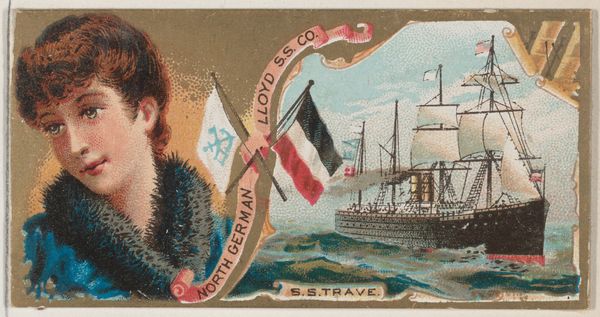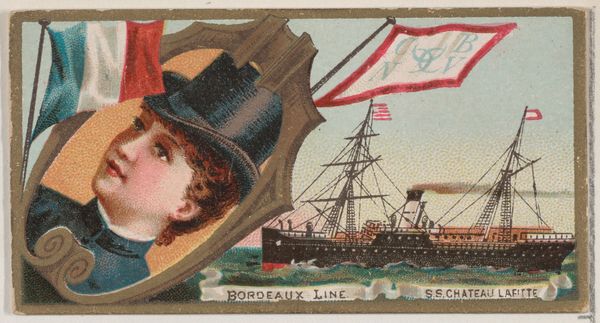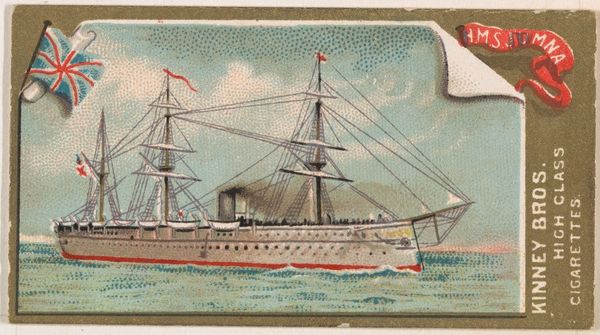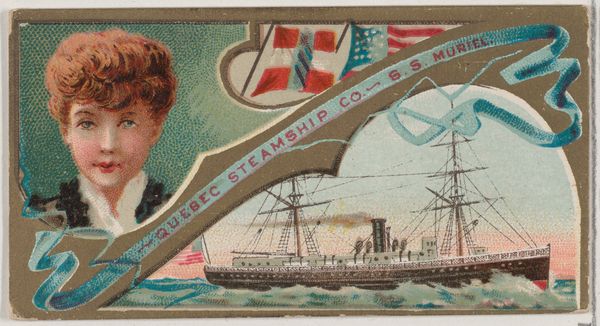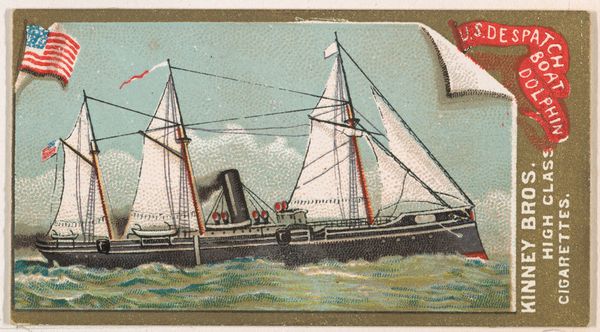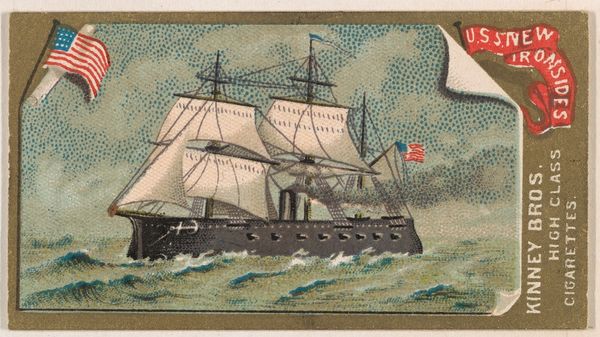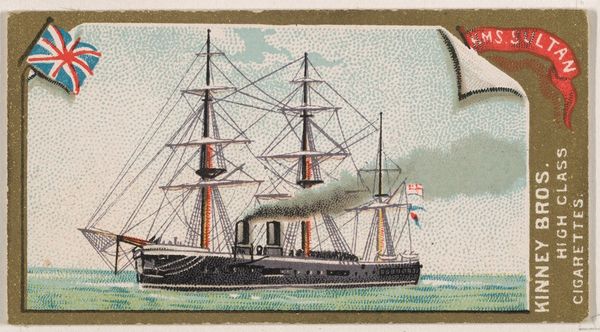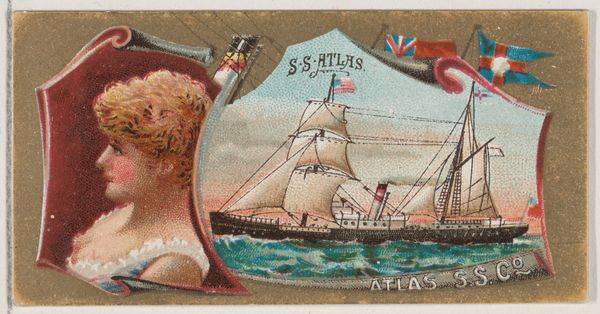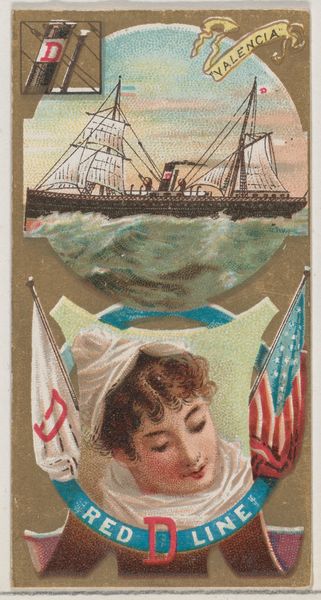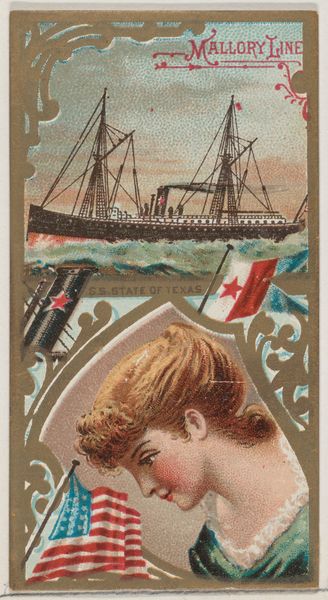
Steamship Westernland, Red Star Line, from the Ocean and River Steamers series (N83) for Duke brand cigarettes 1887
0:00
0:00
print, paper
#
portrait
# print
#
paper
#
coloured pencil
Dimensions: Sheet: 1 1/2 × 2 3/4 in. (3.8 × 7 cm)
Copyright: Public Domain
Curator: This is a trade card from 1887 promoting the Red Star Line, titled "Steamship Westernland," issued by W. Duke, Sons & Co. as part of their Ocean and River Steamers series. Editor: I'm struck by the juxtaposition of elements; there's a classical profile of a woman, almost like a cameo, against the industrial imagery of the steamship and these vaguely Orientalist looking banners and stars. It feels very layered and somewhat disconnected, almost dreamlike. Curator: It reflects the visual culture of its time, straddling the line between romantic idealism and burgeoning industrial progress, of course deeply embedded in class. These trade cards served as miniature billboards in cigarette packs, targeting a mass consumer base. The idealized woman connects to prevailing beauty standards, but also perhaps subtly represents the allure of travel and opportunity, while the steamship stands for mobility, for potential new futures for largely white immigrants. Editor: The symbols are quite fascinating, actually. Red stars recur throughout. Obviously, the company logo uses it. And that strong red against the churning, turbulent sea also really commands attention. Then, what appears to be a Belgian flag is placed there also, probably indicating the country of origin of the ship. Together these images tell me a lot about travel, specifically to Western Europe. Curator: Absolutely. The "Red Star Line" evokes maritime power and imperial ambition. It's important to remember that these shipping lines weren't merely about leisure; they were conduits for migration, colonialism, and the transportation of goods and people, impacting global power dynamics that largely disenfranchised already marginalized communities. So in essence, this simple image embodies the complicated network between travel, colonization, and immigration in the 19th century. Editor: That is the unsettling paradox of such imagery, isn’t it? The allure of new beginnings obscures, even erases, the profound impact on those displaced and exploited by those same forces. But it speaks of how symbolism creates meaning and association through simple images that endure the test of time and distance. Curator: Precisely. It's a reminder to look beyond the surface of seemingly benign images, considering the historical forces and the identities shaped, and sometimes erased, within them. Editor: Thank you; I think looking carefully at the symbols combined with this historical context enriches this work by far more than simply considering it some antiquated ad.
Comments
No comments
Be the first to comment and join the conversation on the ultimate creative platform.

